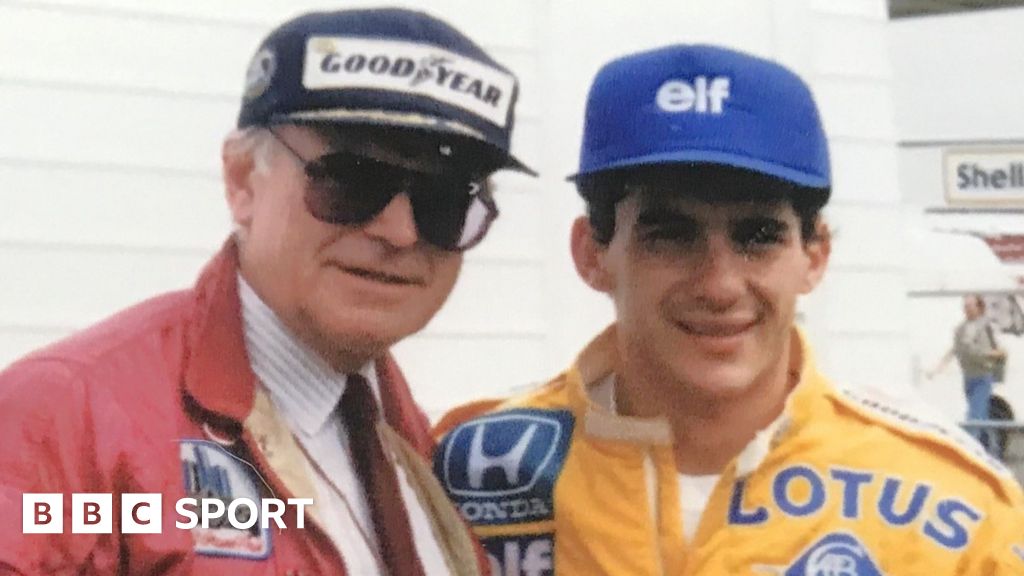Sid Watkins, Ayrton Senna and Formula 1’s safety revolution

When Watkins arrived in F1 in 1978, death was a regular occurrence – at least one driver would be killed while racing most years.
Watkins’ work was to reduce that fatality rate.
He had been hired by Bernie Ecclestone, then the owner of the Brabham team and chief executive of the Formula One Constructors’ Association.
He had telephoned Watkins at the London Hospital and asked to see him later that day. Watkins was part of the medical panel that provided cover at the British Grand Prix, but it was the first time the pair had spoken.
Ecclestone, who had once carried the helmet of his good friend Jochen Rindt back to the pits after a fatal crash, introduced himself and explained the failings in medical safety at circuits.
Watkins, a car enthusiast with a taste for adventure, agreed to take on the challenge.
Wheels had been part of Watkins’ life from an early age. He was born in Liverpool in 1928 and his father ran Wally Watkins’ Bike Shop in Bootle. There was also a family garage where the young boy worked alongside his dad, “pumping petrol, fiddling with cars and doing mechanics’ work”.
After qualifying at the University of Liverpool’s Medical School and a stint in the United States, Watkins returned to the UK in 1970 to become the first professor of neurosurgery at the London Hospital.
Within weeks of his first meeting with Ecclestone, Watkins was attending the Swedish Grand Prix in his new role as F1 surgeon, combining it with his day job.
At the Anderstorp circuit, Watkins found there was no helicopter provided for practice because it was not considered dangerous compared with the race.
He would soon become accustomed to the haphazard nature of safety arrangements within F1.
At Brands Hatch for the British Grand Prix, he was faced with a small, ill-equipped medical centre staffed by two ambulanceman drinking beer.
But at least there was a medical centre. At the next race in Germany, at Hockenheim, the emergency facility was a converted single-decker bus, with its staff camping in tents nearby.
It reflected a culture within the sport which seemed to accept death as an occupational hazard.
“When Sid arrived in the sport, life was cheap,” Hill, Senna’s team-mate at Williams when he died in 1994, tells BBC Sport.
“Drivers were seen as risk-takers and playboys. The fatalities were just part of the price for having a good time, really.”
Hartstein, who worked full-time alongside Watkins as his deputy from 1997 and succeeded him in 2005, agrees.
“When Sid was asked by Bernie to come in, things were fairly dreadful and had been dreadful for a long time,” he says.
Watkins acted quickly, telling Ecclestone circuits should not hold F1 races unless they had properly equipped medical centres. He asked that he and an anaesthetist be allowed to follow the first lap of a race in a fast car equipped with a radio and “driven by a competent, recognised race driver who knew the circuit”.
He also stipulated that helicopters should be available for all practices, the warm-up and the race.
Less than three months after attending his first grand prix in his new role, Watkins saw first hand the urgent need to change mindsets and improve safety measures.
After a huge first-lap crash at the 1978 Italian Grand Prix, police formed a line across the track and would not let him past. On the other side of the cordon Swedish driver Ronnie Peterson was trapped in his wrecked Lotus with serious leg injuries. After significant delays in getting him free and treated by medics, Peterson died from an embolism the following morning.
Watkins was subsequently given responsibility for supervising and being actively involved in rescue arrangements at circuits.
“Because this had never happened before, because this never existed before, it was incredibly hard,” Hartstein says. “Doctors around the circuit, deployed in a certain way with a certain level of competency, ambulances, referral hospitals – the whole system that we take so for granted now, he had to create that.
“There was no culture for that. There were the silly arguments: ‘Well, people come to see the deaths and that’s part of the attraction, and the drivers understand that, they’re consenting.’
“The first and hardest battle was to change mentality. His job was rendered difficult by recalcitrant culture.”
Related
Jonas vs Price: How women’s boxing can become centre stage…
The iconic Royal Albert Hall has hosted pugilism for over a century, welcomed key political figures and showcased musical superstars.On Friday evening, a women'
Belgian Darts Open: Ryan Searle sets up Luke Littler showdown…
Ryan Searle set up a showdown with world champion Luke Littler and Mike De Decker booked a reunion with world No 1 Luke Humphries
Sky Sports presenter reveals she has a brain infection following…
A Sky Sports presenter has revealed she has a brain infection after battling cancer.Emma Saunders, who works as a presenter and match day reporter for Sky, was
Jonas vs Price as it happened: Reaction, analysis, boxing results,…
'I want to go back to Wales'published at 23:37 Greenwich Mean Time 7 March23:37 GMT 7 MarchPrice beats Jonas by unanimous decisionLauren Price speaking to Sky S













